
Oatmeal cookies have always carried with them the unattractive whiff of the “healthy option” for me. They seemed like the kind of thing you’d get in your packed lunch instead of a Penguin. Those raisins, which so easily could have been chocolate chips yet inexplicably weren’t, were the final insult for anyone hoping for an actual treat.
Reader, I’ve been unfair. Turns out oatmeal cookies can be utterly delicious … as long as you live near an American bakery or make them yourself. Good as we are at many and various oat biscuits, I’ve never had a British cookie to match up to the recipes I’ve tried this week, all of which hail from across the pond, where the idea as we know it seems to have appeared around the same time as commercial oat brands.
Simultaneously crisp and chewy, the cookies below are best enjoyed fresh, which is why they’re worth making yourself. Oh, and I was also wrong about them being a health food. Sorry about that.
The oats
For a country that once largely subsisted on them, the UK has become remarkably narrow-minded in its choice of oats – or perhaps it’s just that the supermarkets have decided we’re only interested in convenience. My local shop carries 26 sorts of “porridge oats” (made from steamed rolled oats) and instant porridge, made from oats that have been rolled more thinly and steamed for longer, but no oatmeal, which is made from chopped raw oat groats. Sometimes known as steel-cut or Irish oats, oatmeal takes longer to cook, but is, I think, more interesting to eat. (It also contains more fibre.)
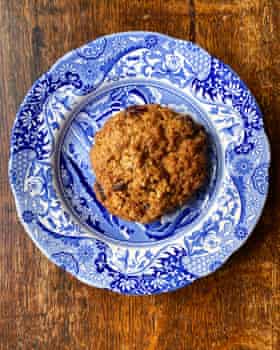
Most of the recipes I try agree with the folks at Cook’s Illustrated magazine, however, that “old-fashioned rolled oats” (that is, porridge oats) have the best “texture and flavour”. Hoping to put this to the test, I find one highly-rated recipe using instant oats on the Buttermilk by Sam baking blog – indeed, she cautions readers that “it’s important to use the right type of oats for these … if you use old-fashioned rolled oats, the cookies will spread. Avoid steel-cut oats of any type” – and another, from pastry chef Stella Parks’ book BraveTart, that uses steel-cut oats as well as the rolled variety.
The main difference as far as cookies are concerned is the oats’ willingness to soak up moisture: the precooked instant oats soften immediately, which means that, as Sam cautions her readers, any dough involving them should be baked immediately, before it dries out. Conversely, doughs using rolled oats, which are chunkier and only partially cooked, will benefit from being allowed to sit for a while, so they can absorb the moisture in the butter and eggs. Melissa Weller’s recipe, from her book A Good Bake, recommends leaving it for four days before baking to achieve “the perfect texture, slightly crispy around the edges with a chewy centre”.
Weller’s are certainly the most satisfying texturally, dense in a wholesome kind of a way, and less crumbly and scone-like than the similarly plump versions from Elif Yamangil of the Plenty Sweet blog, who says that, while you can chill the dough for an hour, she bakes it immediately. (Note: this is not to disparage her biscuits, reverse engineered from Cape Cod’s cult Kayak Cookies’ salty oat version, which are refreshingly light in both texture and sugar content in comparison with the seven other recipes I try for this piece.)
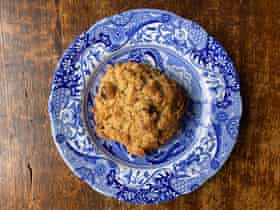
Parks’ handful of oatmeal gives her recipe a satisfyingly nubbly, chewy texture that makes it clear who the headline star is in these cookies. You could leave it out in favour of an extra handful of rolled oats, but in my opinion it’s well worth tracking some down for this. (It also makes great porridge.)
The flour and raising agents
With the exception of Yamangil, who suggests white wholewheat flour (which appears to be what we’d call wholemeal flour), all the recipes I try use the plain type, either with bicarbonate of soda (Parks, Weller, Sam, Sebastien Rouxel’s Bouchon Bakery version and “Ruth’s oatmeal crisps” from the New York Times Cookbook); baking powder (Cooks Illustrated) or both (the luxury oatmeal cookies from Rose Levy Beranbaum’s the Baking Bible) to give the cookies a bit of height. I don’t want mine to be too puffy, so I’m going to stick with bicarb alone, but I will, like Parks, be replacing some of the wheat flour with oat flour, for extra oaty oomph. You’ll find this in healthfood shops, or online, or you can make it yourself by whizzing up oats in a food processor until finely ground.
The sugar(s)
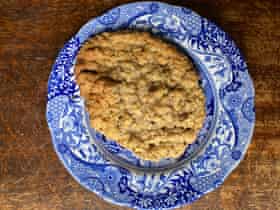
Almost all the recipes use a mixture of soft brown and white sugars. As Fine Cooking magazine explains, the former “makes cookies moister and chewier than does white sugar. That’s because it contains molasses … [which add] moisture and, because it’s slightly acidic, causes the proteins in cookie dough to firm up faster, creating a chewier texture.” Parks adds that this acid also reacts with the baking soda to give a thicker, puffier cookie, which explains why the recipes that use more brown than white sugar –as Keller, Beranbaum and Weller do – seem to spread a bit less than those that use equal parts of both, such as Ruth’s New York Times Cookbook recipe that nevertheless won the cookie contest at the 1966 Kentucky State Fair.
There are two exceptions: Sam uses just brown sugar and Yamangil just white. I miss the thin, crisp edges that white sugar gives the other cookies in the former, and the flavour of brown in the latter, but they stand as proof that either will yield satisfactory results. I’m a fan of a chewy, damp cookie with a toffee-ish flavour, however, so I’m going to go big on brown sugar, with just enough white for that all-important crunch.
The fat
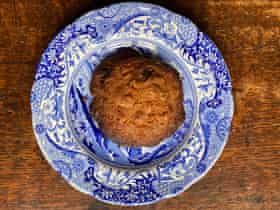
Butter, for me, is a must: the plant variety I use in Ruth’s state fair-conquering cookie just can’t compete on taste, though the texture is extremely moreish – indeed, the recipe is prefaced by the claim that it is “a great example of the power of shortening … in cookies. Butter would be too heavy and the cookies wouldn’t be quite as crisp and chewy”. I do like the crispness – they spread so much, they’re halfway between a flapjack and a brittle – but when it comes down to it, I prefer the richness that dairy brings.
Eggs, meanwhile, according to Parks, are the unsung best supporting actors here: “If butter and sugar are the stars of the cookie show, then an egg is craft services, dutifully showing up to provide the fuel everyone else needs to get the job done: plenty of water, some lecithin [a powerful emulsifier], fat, and protein.” Adding an extra yolk, as Weller suggests, seems to give her cookies, like Sam’s, a soft, dense, almost fudgy texture that is very popular with my testers; the extra fat, Parks explains, hinders “both gluten development and aeration”.
Fruit and flavourings
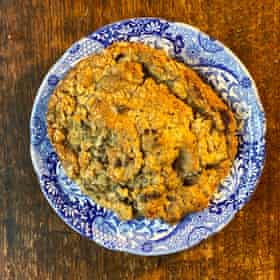
I’m also with Parks when she suggests swapping “traditional raisins for tart dried cranberries or cherries. They balance out the sweetness of the cookies so much better.” But then, I’m not a big fan of raisins in general, which you may wish to take into account. Rouxel recommends soaking the fruit in warm water before use to plump it up, if necessary, which is a good idea, particularly for the ones on top, which will be exposed to the full heat of the oven. Note that, like Sam, you could also add chocolate chips to your cookies, or indeed chopped nuts for a change of texture; I particularly like the bitterness of Levy Beranbaum’s walnuts, but Adkins’ buttery pecans also work well.
“What makes this cookie really special,” Levy Beranbaum writes in her introduction, “is that instead of adding rolled oats and nuts to the dough, I make my own granola. The oats and nuts get tossed with just enough brown sugar and maple syrup to sweeten them lightly, and then they are baked at a very low temperature to crisp and infuse them with the sweetener and fully bring out their flavour.” The granola recipe, she says, comes from Caitlin Williams Freeman of San Francisco Moma and Blue Bottle Coffee, and gives her cookies a very satisfying internal crunch, but I’d be tempted to class them as granola cookies rather than classic oatmeal.
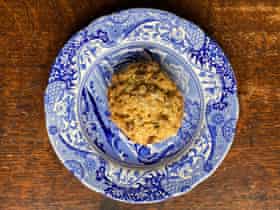
She, like many others, uses both cinnamon and vanilla as flavourings – indeed, Rouxel sticks in a whopping tablespoon of the former, which appeals mostly to the Americans I deploy as testers; I certainly find it a bit much. By all means add cinnamon if you’re a fan, but personally I, like Cook’s Illustrated, think it overpowers the oats. They substitute nutmeg, but I’m going to stick with vanilla, which I find a more harmonious pairing with the butter and brown sugar, but, again, optional. Salt, however, is not: it helps to balance the sugar needed to achieve a satisfactory texture, which is why I’m also, like Yamangil, going to finish the cookies with an extra sprinkle of the stuff. Feel free to omit this if you’re less of a salt fiend.
The shaping
Cook’s Illustrated recommends “shaping the dough into two-inch balls (rather than dropping the meagre rounded tablespoon called for in most recipes) [to] help keep the cookies more moist and chewy”. Larger cookies are desirable here, to maximise the contrast between the soft middle and the crunchy edges, but perhaps not quite as large as Rouxel’s, which fill a plate. Then again, each to their own.
Perfect oatmeal cookies
Prep 5 min
Cook 20 min, plus resting time
Chill 2 hr+
Makes 16
170g butter, at room temperature
100g white sugar
125g light brown sugar
1 tsp fine salt
1 whole egg and 1 egg yolk
1 tsp vanilla extract (optional)
80g plain flour
70g oat flour
1 tsp bicarbonate of soda
150g rolled oats
40g medium or coarse oatmeal
100g dried cherries, cranberries, raisins or sultanas (optional), soaked briefly in warm water if very chewy, then drained
50g walnuts, roughly chopped (optional)
Coarse salt, to finish (optional)
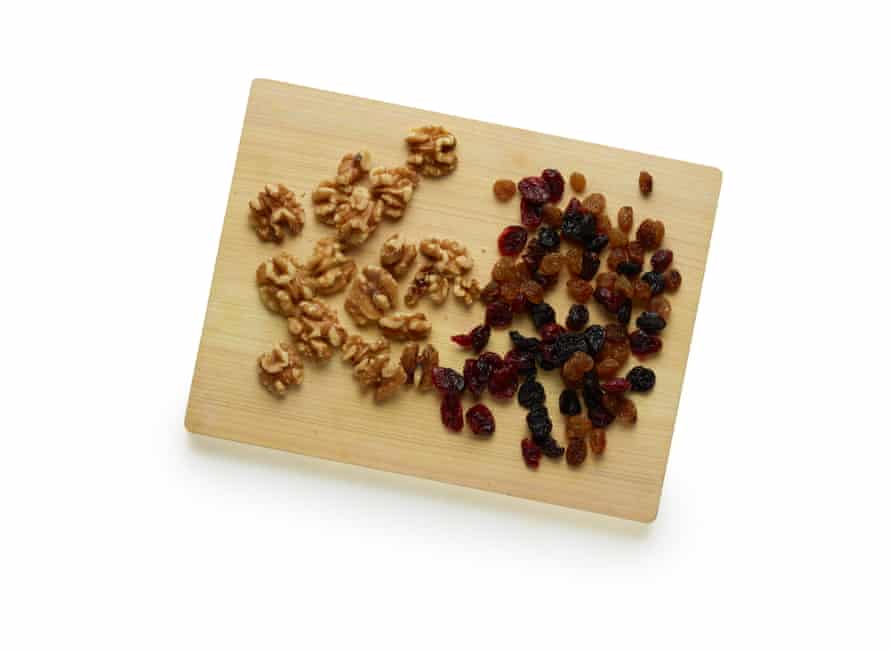
Put the dried fruit, if using, in a small heatproof bowl and cover with hot water (unless it’s soft and plump already). Leave to sit while you get on with the dough.
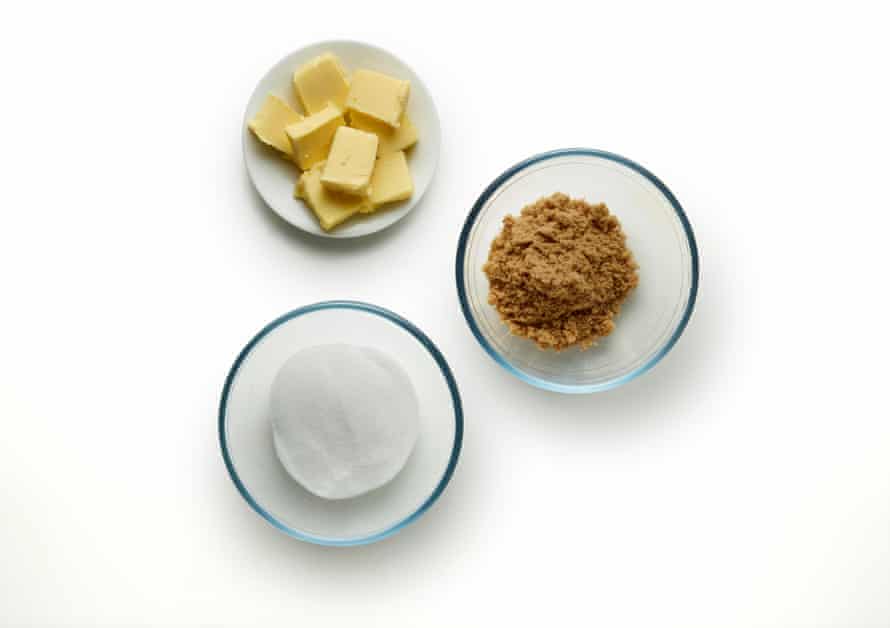
Beat the butter with an electric whisk until soft, then add the sugars and salt, and continue beating for about three minutes, scraping down the sides of the bowl as you go, until the mixture is light and fluffy.
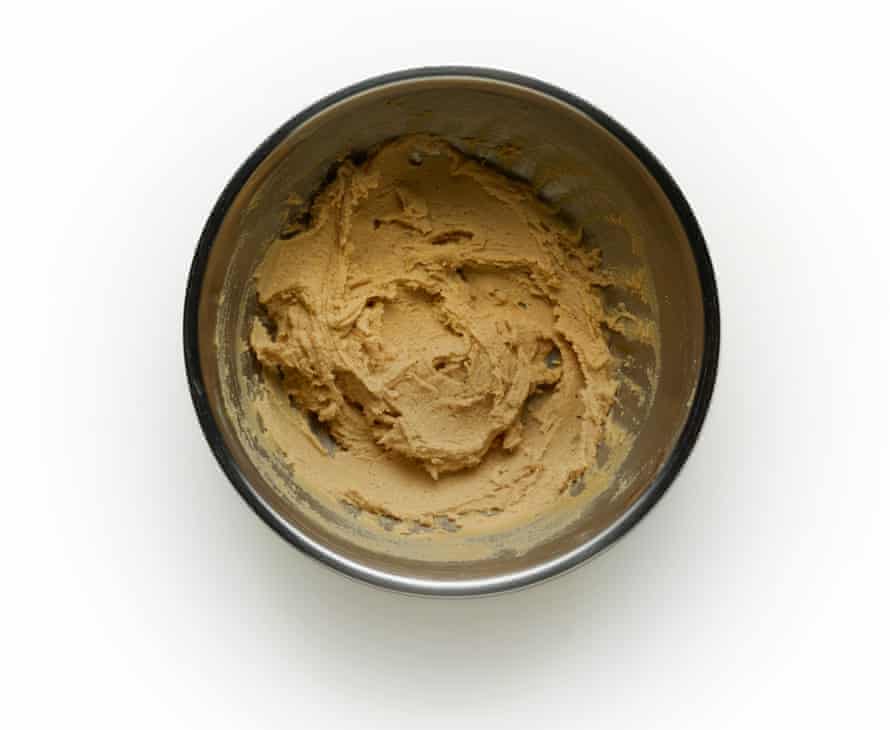
Beat the egg, yolk and vanilla extract into the mixture until well combined, then sift in the flour, oat flour and bicarb and fold into the dough until just mixed.
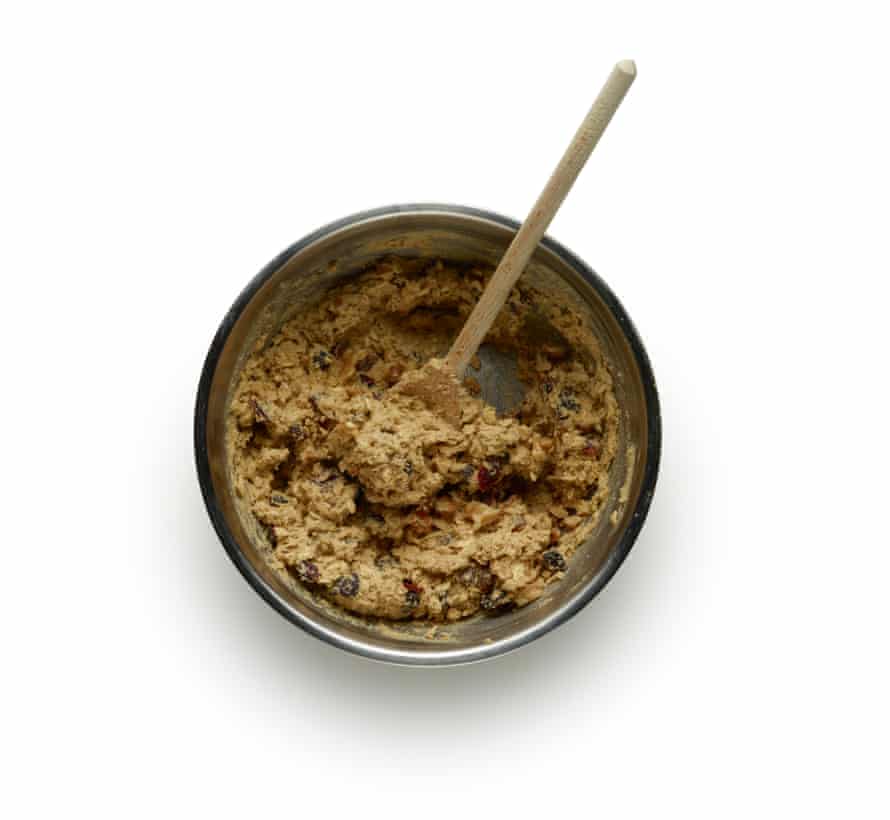
Drain the fruit well and pat dry, then stir it into the mix with the oats, oatmeal and, if you’re using them, the nuts.
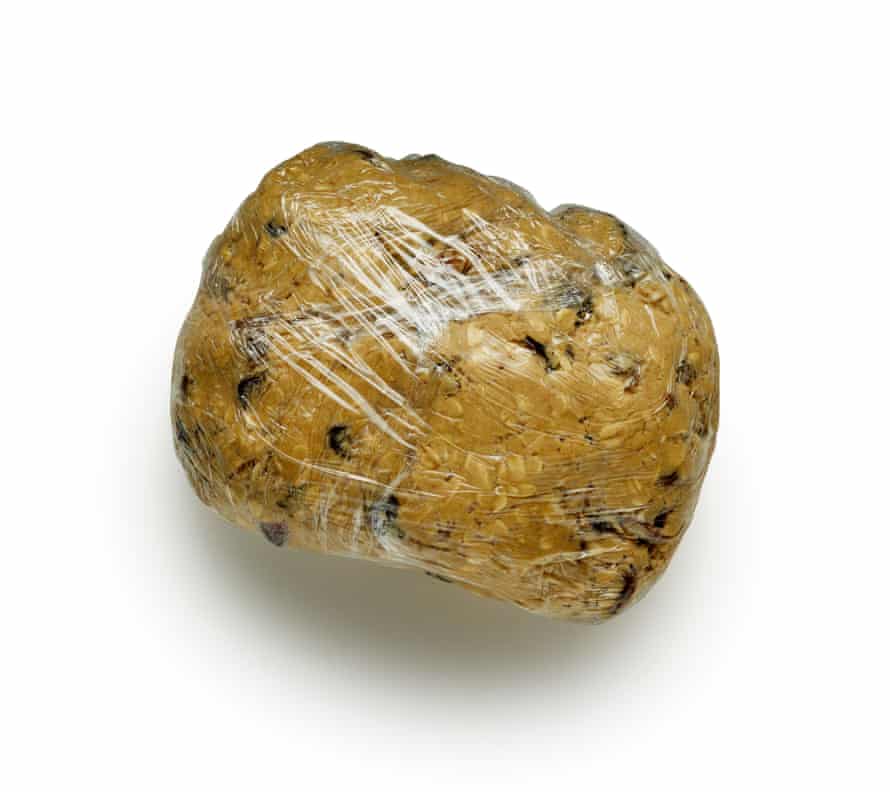
Cover or wrap the dough and chill for at least an hour, and preferably a couple of days.
Line two baking trays with greaseproof paper and heat the oven to 200C (180C fan)/ 390F/gas 6.
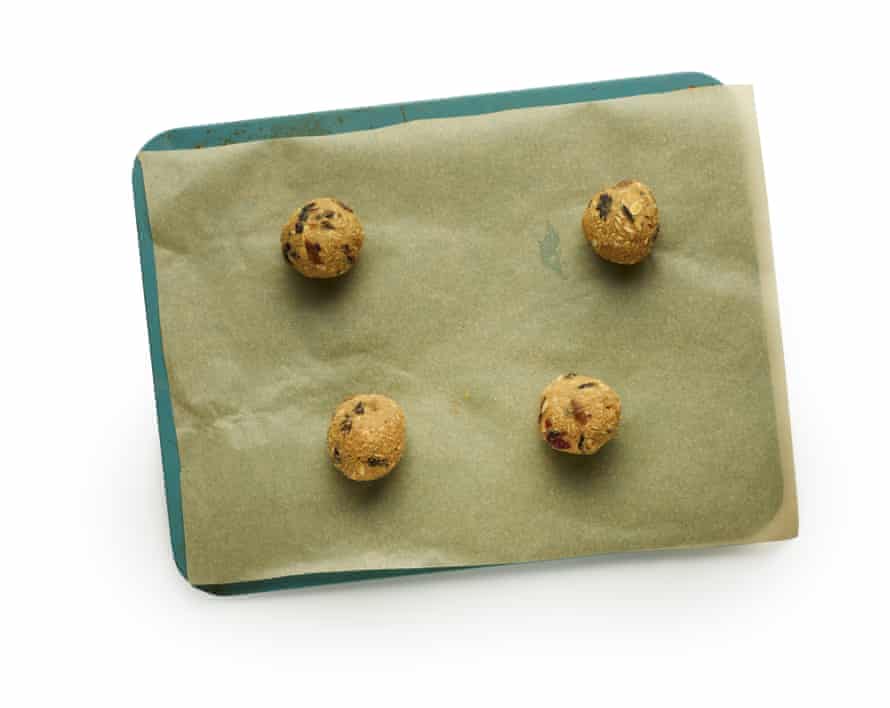
Use your hands to pinch off 50g pieces of dough, roll these into balls and arrangewell spaced out on the baking trays.
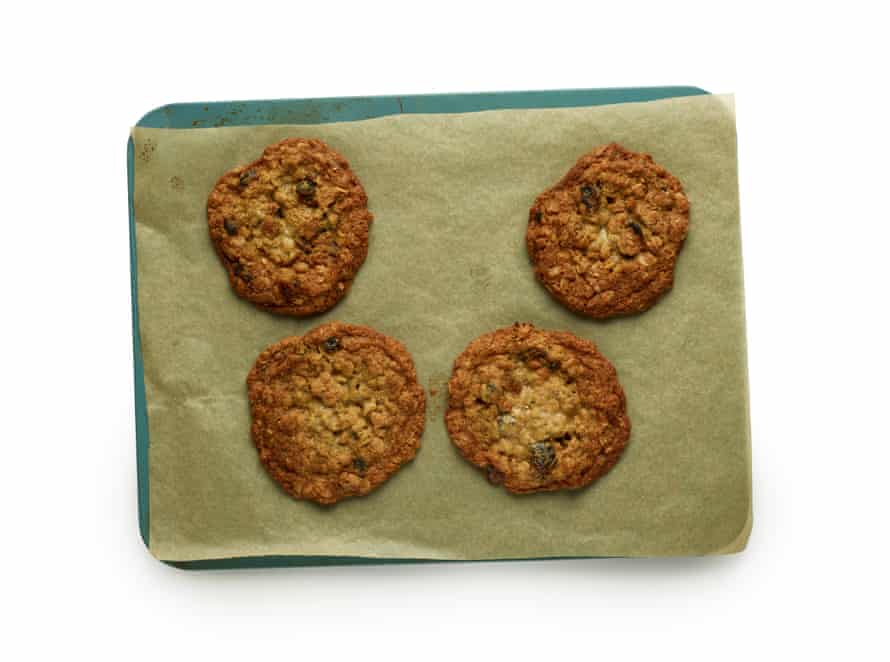
Bake for about 18 minutes, until golden brown and firm around the edges, then remove, sprinkle with a little coarse salt and leave to cool on the trays.
-
Oatmeal and raisin cookies: beloved taste of childhood, or sad taste of disappointment? What’s the secret to greatness, and where makes the absolute best versions?



